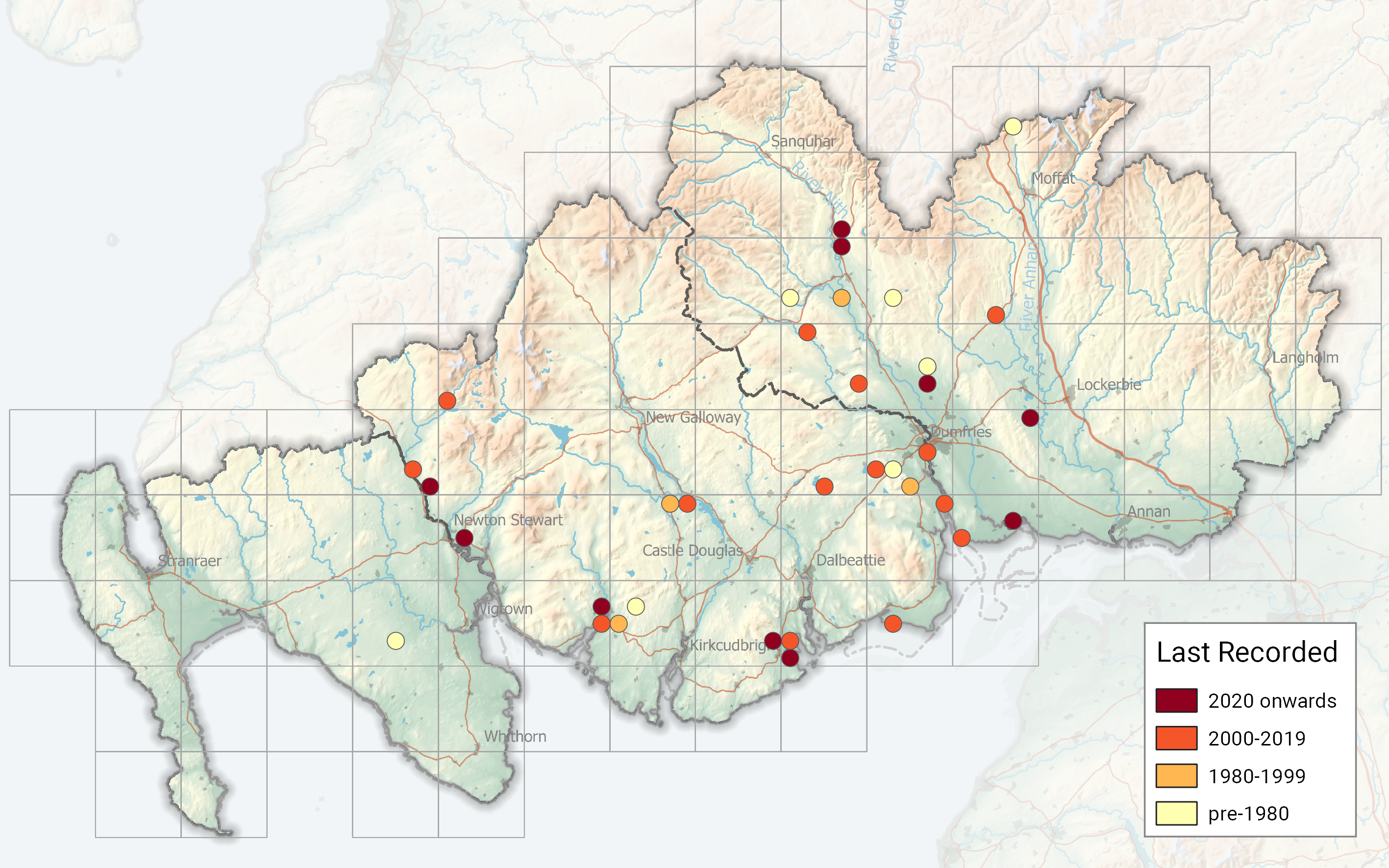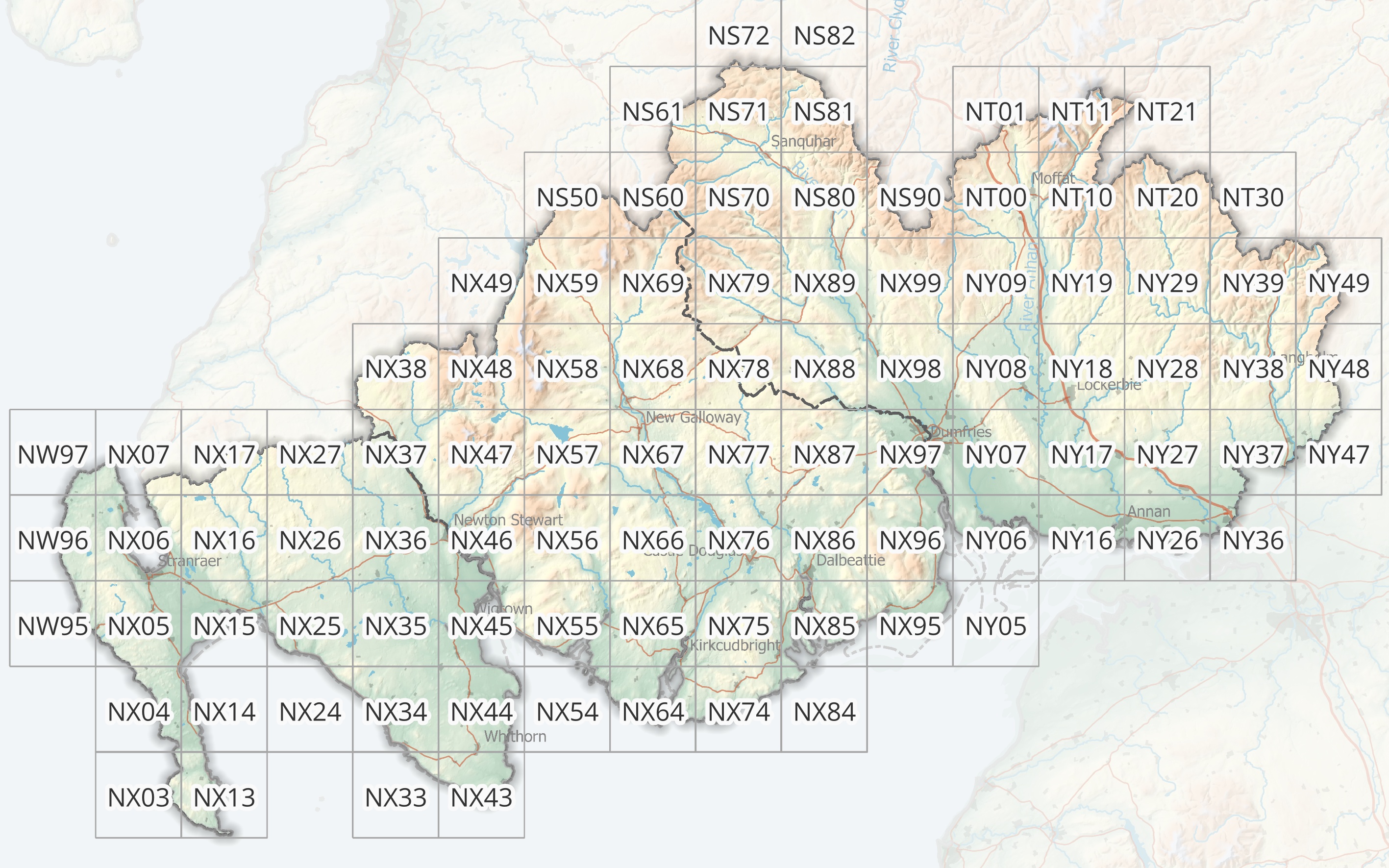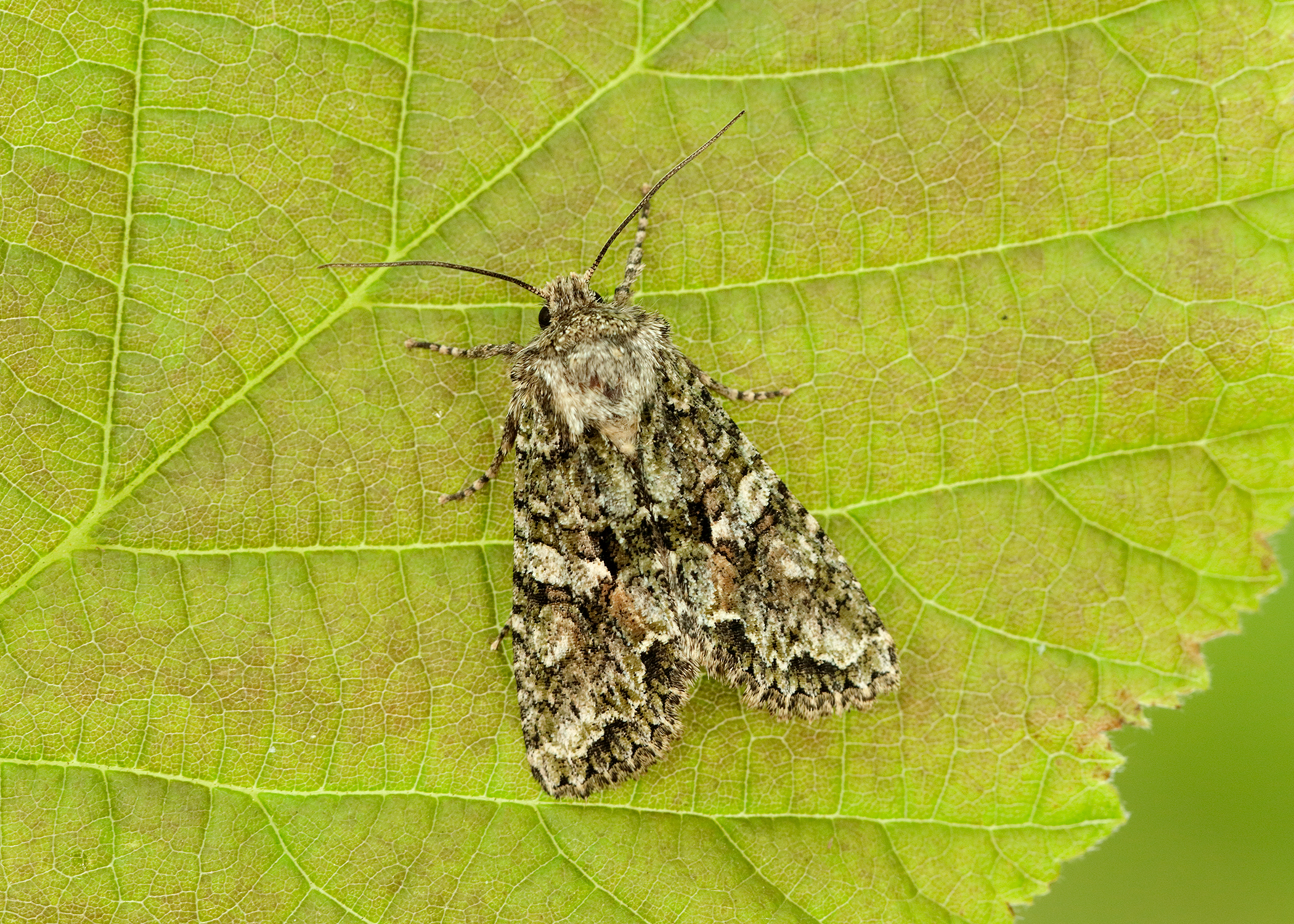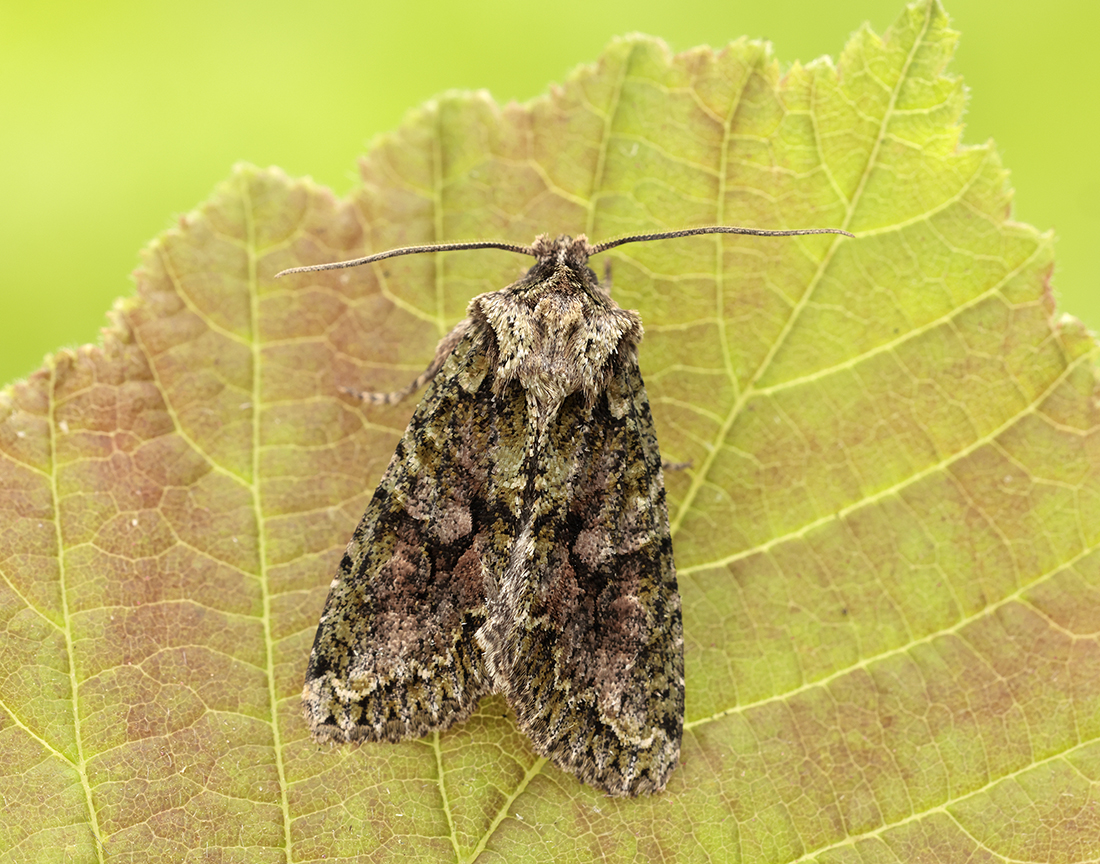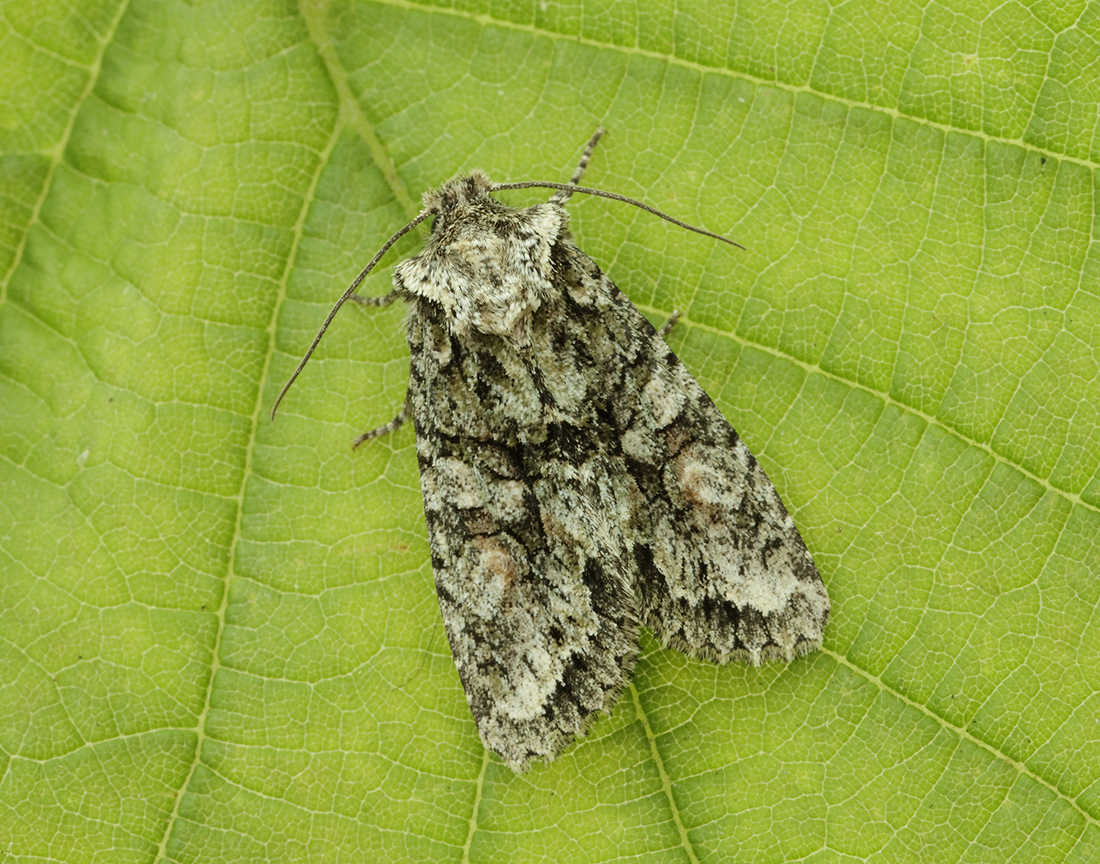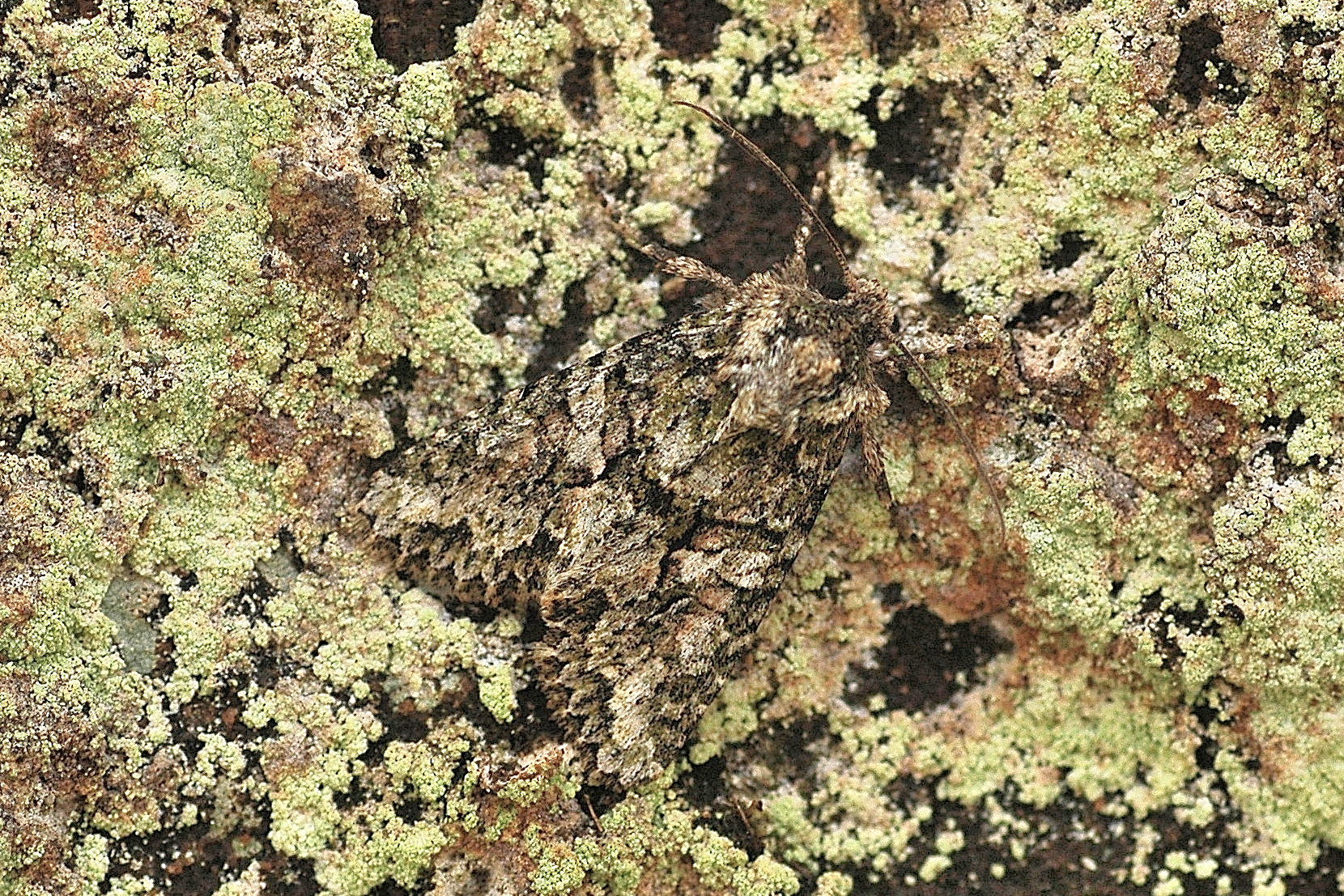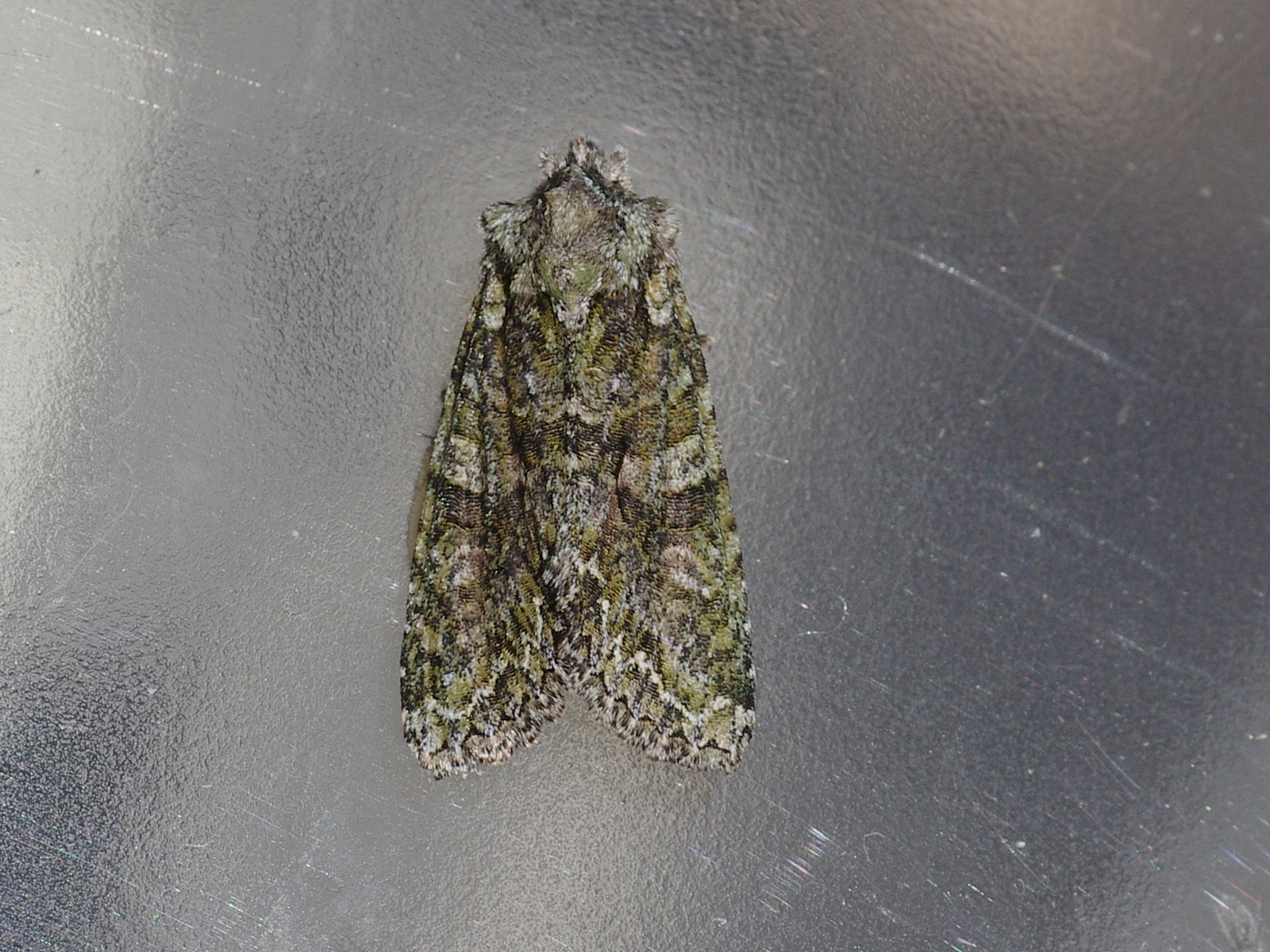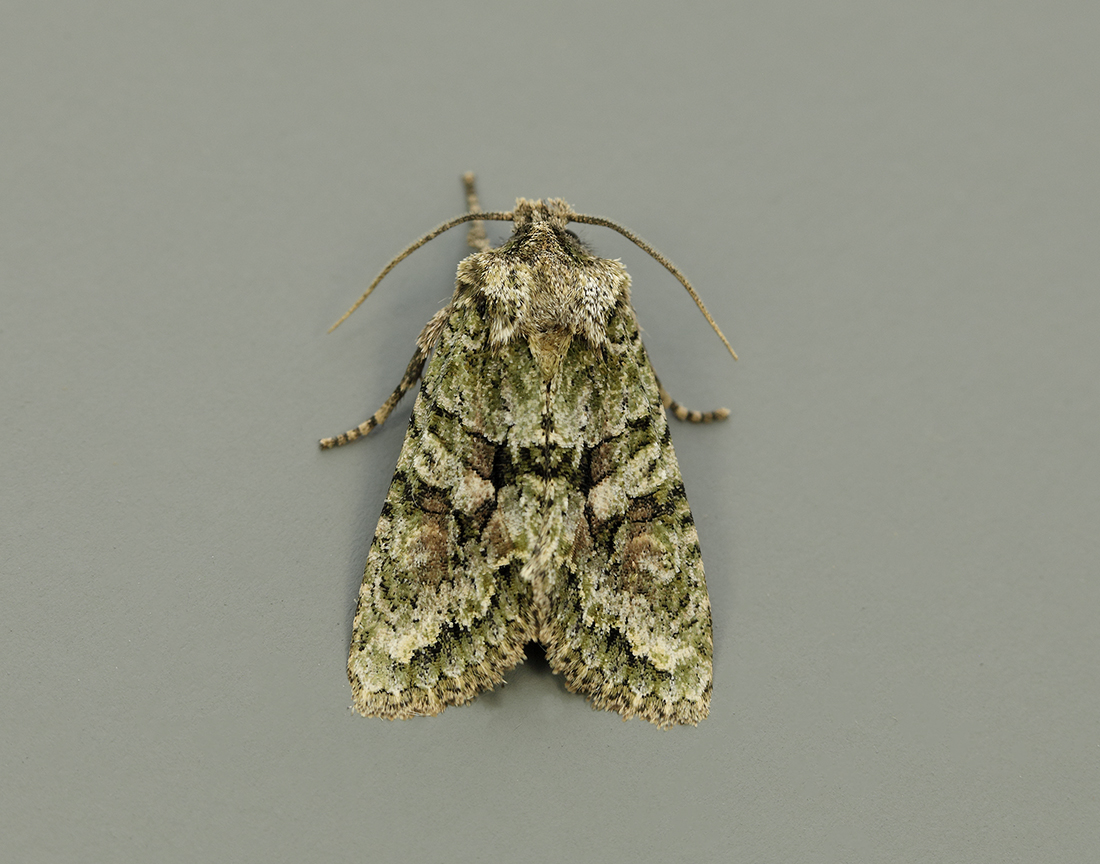Identification
The small pale blotch adjacent to the oval bordered with black at the rear and outer edges is diagnostic.
Recording Method.
Attracted to light, also comes to sugar.
Life cycle
One generation. Overwinters as an egg, Larvae appear during April to June. Pupation takes place underground in a cocoon.
Larval foodplants
Larvae feed on oaks; possibly Hazel and other broadleaved shrubs.
Habitat
Broadleaved woodland and parkland.
History
Lennon (1863) under Hadena protea had found it to be common at Dalskairth (VC73). Gordon (1913) found the Brindled Green to be very rare, having only found it twice and both times at light in the house at Corsemalzie, one on 15th August 1895, the other two days later. Neither of these records are shown in MOGBI but for this period they are still the only records for VC74.
Sir Arthur Duncan (1909-84) during his lifetime had found it at Closeburn and Tynron (VC72). Archibald Russell (1944) listed it as occurring near Gatehouse of Fleet (VC73) during the years 1942-43.
Waterside Mains at Keir during 1977-82, Mabie Forest 1986-90 and Gatehouse of Fleet (2 records) 1979-80 were the only Rothamsted stations to capture this species.
Between 1992-2010 it was found in VC72 at Moffat once and Kirkton regularly, while in VC73 there were small numbers of records from the following sites: Cally Woods, Buchan Burn, Mersehead RSPB and Old Torr, Auchencairn.
